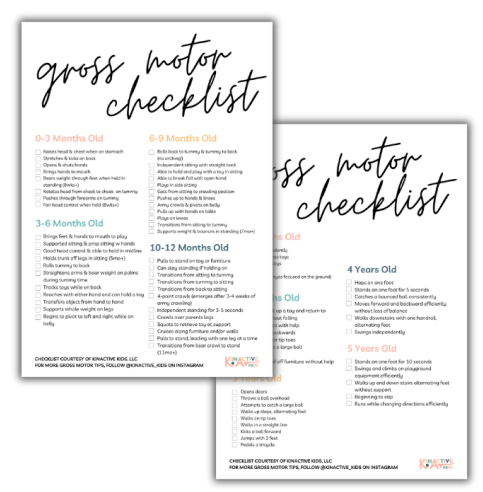A PT’s Guide to Army Crawling In Infants

Is Army Crawling In Infants Good or Bad?
Army crawling in infants, or commando crawling, is a common developmental milestone for babies. It generally occurs between 6-8 months of age when babies start to pull themselves forward using their arms while dragging their legs behind them. This form of mobility is one of the early signs that your baby is gaining independence and developing crucial motor skills. Watching your baby army crawl can be an exciting moment for many parents, signaling that they are on their way to becoming more mobile and exploring their environment. But is army crawling in infants always a good thing? And should you be concerned if your baby sticks to this method of movement for too long?
The short answer is that army crawling is not inherently bad. It’s a typical stage in your baby’s motor development and can serve as a precursor to more advanced forms of crawling. However, prolonged army crawling in infants could indicate certain underlying weaknesses or muscle imbalances, particularly in the hips or trunk. If your baby is primarily army crawling well beyond the typical age range for transitioning to hands-and-knee crawling, it may be worth exploring why this is happening. Don’t worry—many babies who start with army crawling naturally progress to hands-and-knee crawling with time, practice, and encouragement.
In this guide, we’ll explore army crawling in infants, discuss when it might be a cause for concern, and provide some practical tips and exercises to encourage your little one to transition to more advanced forms of crawling.
Why Do Babies Army Crawl?
Army crawling in infants allows them to move forward and explore their surroundings using primarily their arms. This method of crawling helps babies strengthen their upper body and develop essential motor coordination. It’s especially common in babies who haven’t yet developed the strength or coordination to get up on their hands and knees. Some babies may also prefer army crawling because it feels easier or more natural, allowing them to move quickly and efficiently.
While army crawling in infants is a transitional phase that lasts only a few weeks before they advance to hands-and-knees crawling. Others might skip traditional crawling altogether and move directly from army crawling to pulling up, standing, and walking.

When Should You Be Concerned?
While army crawling in infants is a natural phase in many babies’ motor development, prolonged army crawling in infants can sometimes indicate that your baby is compensating for weaknesses in other areas. For example, if your baby continues army crawling well beyond 9 months without attempting to transition to hands-and-knees crawling, it could signal muscle imbalances in the hips, core weakness, or a lack of proximal stability (the strength and control of the muscles around the torso and pelvis).
When to consult a pediatric physical therapist about army crawling:
- Army crawling past 9-10 months of age: If your baby hasn’t started transitioning to hands-and-knees crawling by 10 months, it’s worth seeking advice.
- Limited movement in the legs: If your baby significantly prefers using their arms over their legs to move, this could indicate an imbalance.
- Difficulty maintaining a hands-and-knees position: Babies should naturally progress from army crawling to getting on all fours. If your baby struggles to hold this position or seems reluctant, it could be due to weak core muscles.
At KinActive, we specialize in pediatric physical therapy, and we’re here to help assess your baby’s development and offer guidance on exercises that can improve muscle strength and coordination.
How to Encourage Traditional Hands-and-Knees Crawling
If you notice your baby army crawling for an extended period, you can incorporate exercises and playtime activities that strengthen their core and upper body to encourage the transition to traditional crawling. Here are some practical tips:
1. Hands-and-Knees Play
Encourage your baby to spend time on their hands and knees to build proximal stability and upper body strength. Place your baby in an all-fours position and help them hold this posture. If they struggle to maintain balance, you can place a pillow or your leg underneath them to offer some support. As they get stronger, try to reduce the support you provide until they can hold this position on their own.
Once they become comfortable on their hands and knees, you might see them start to lift one leg at a time or move toward crossing over an obstacle, such as your leg or a pillow. This type of play helps build the muscles and coordination needed for crawling.
2. Tall Kneeling Practice
Another excellent exercise is tall kneeling. Have your baby kneel with their trunk off their heels, and place a toy on an elevated surface, such as a small table or box. This encourages your baby to strengthen the muscles in their hips and thighs, which are essential for weight-bearing and balance. As they become more stable in the tall kneeling position, you can create more challenging opportunities by sliding a laundry basket or box slightly out of their reach. This will encourage them to walk on their knees to grab the object.
3. Encourage Twisting Movements
To transition to hands-and-knee crawling, your baby must learn to shift their weight over their hips and thighs. Playtime activities that involve twisting motions can help develop these essential skills. For example, place toys on either side of your baby while they are sitting. This will require them to reach and twist their body, shifting their weight from one side to another. The more they practice this movement, the easier it will become for them to transition into a crawling position.
4. Tummy Time
Never underestimate the importance of tummy time! Tummy time is critical for building your baby’s upper body and core strength, both of which are necessary for crawling. Ensure your baby gets plenty of tummy time each day, and consider incorporating interactive toys or mirrors to make it more engaging. Tummy time should be a regular part of your baby’s daily routine, even after they start crawling, as it promotes healthy muscle development.
5. Obstacle Courses
Create a fun and interactive environment by setting up an obstacle course at home. Use pillows, soft cushions, or toys to encourage your baby to move around them. This will help your baby practice shifting their weight, balancing, and coordinating movements. These challenges provide physical and mental stimulation as your baby learns to problem-solve and maneuver through obstacles.
How Long Should I Let My Baby Army Crawl?
There’s no set timeline for how long your baby should army crawl before transitioning to traditional crawling. Some babies may only army crawl for a few weeks, while others may take a few months to progress. The important thing is to observe your baby’s development and encourage hands-and-knees crawling when you feel it’s appropriate.
If your baby army crawls for an extended period but continues to show other signs of motor development—such as sitting up, pulling to stand, and eventually walking—you likely don’t need to worry. However, if your baby is only army crawling and shows little interest in other developmental milestones, it may be a good idea to consult with a pediatric physical therapist to ensure there are no underlying concerns.
Need Additional Support?
At KinActive Kids, we understand that every baby develops at their own pace, but we’re here to support you through every stage of your little one’s journey. If you have concerns about your baby’s motor development or are seeking guidance on encouraging more traditional crawling, we can help in a few ways.
- Take our masterclass on crawling. Best for parents needing professional guidance from the comfort of their own home.
- Book a Kamp. Best for parents with children experiencing atypical development.
- Book a virtual consultation with our clinic.
We offer comprehensive services designed to support your baby’s physical development, from structured therapy sessions to hands-on advice that you can implement at home. Contact us today to schedule a consultation and help your baby reach their full potential.
Remember to follow us on social media for more tips and information on your baby’s development!


